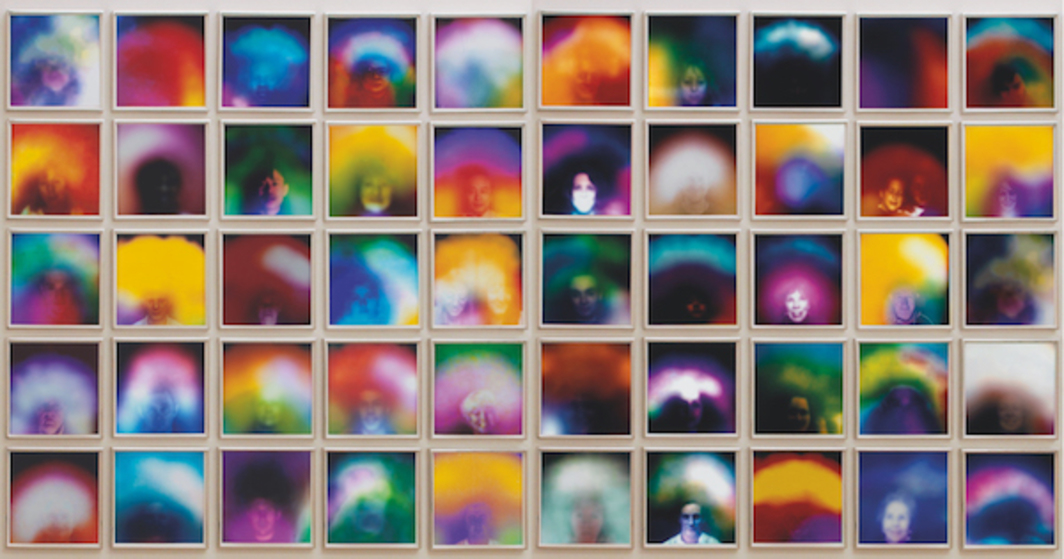Artforum.com
April 28, 2017
Click here to view full article online.
 Susan Hiller, Homage to Marcel Duchamp: Auras, 2008, fifty color archival dry prints, each 12 x 12", overall 12 1/2 x 12 1/2'.
Susan Hiller, Homage to Marcel Duchamp: Auras, 2008, fifty color archival dry prints, each 12 x 12", overall 12 1/2 x 12 1/2'.London-based artist Susan Hiller is known for her innovative media works, many of which incorporate elements of anthropology and psychoanalysis. One recent strain of her practice involves artworks that pay tribute to other artists whose works reveal an influence of occult or paranormal ideas, such as her ongoing Homage to Marcel Duchamp: Auras, 2008–, a collection of aura photographs, sourced online and digitally modified; the work is inspired by Duchamp’s Portrait of Dr. Dumouchel, 1910, which shows the sitter surrounded by colorful emanations. Here, she speaks about the aura works included in her current exhibition, “Susan Hiller: Paraconceptual,” on view at Lisson Gallery in New York. The show, which features a range of pieces made between the 1970s and the present, runs from April 28 through June 10, 2017.
I LIKE TO STAND IN THE MIDST of the whirlwind, and show what’s out there and what’s denied. For the most part, the artists in my homage pieces—such as Gertrude Stein, Marcel Duchamp, and Joseph Beuys—did not emphasize that their work carried forward a whole tradition of occult knowledge, but they referred to it and they used it, even when denying it. When Duchamp made his painting of Dr. Dumouchel, he didn’t talk about clairvoyance or ancient beliefs in auras. He adopted the idea as a painting device. I picked up on that and have contextualized it within our contemporary world, where more and more people are attracted to this kind of reality. I know our culture is in denial about a lot of things. Our hard-wiring as human beings probably prevents us from knowing a great deal about what is real, and each language also sets limits. But every once in a while people experience breakthroughs.
My approach to all this is political. The politics has to do with a conviction that it’s only in moments of liminality that anything new can come into being. Whether it’s an idea, a political action, an invention—it originates where we function creatively. This is of course very important in art practice but also socially and politically.
The desire to record and capture auras has two kinds of advocates. There are clairvoyants, who say they see colored emanations around people, from which they can tell the health, temperament, and well-being of the person according to the hues, brightness, or strength of the aura. And there is also the work of scientists from the nineteenth century onward, which has led to today’s specialized aura cameras. These don’t actually photograph auras, but they use computers to translate the electricity from a person’s hands into unique colored patterns around their portrait.
I am interested in demonstrating the connections among supposedly unique “genius” artists, and I am also interested in mapping out networks of the many people who are participants in the same kind of work but don’t situate it within the discourse of art. For example: Not all the people who post their aura pictures online want to be acknowledged as artists, but they do want to have those pictures seen. It’s interesting that the subject dissolves in a cloud of colored light. On the one hand, the image has a history, and on the other, it is enigmatically definitive of how we see ourselves in the digital age. You know, we are pixels; we’re light.
— As told to Allison Young